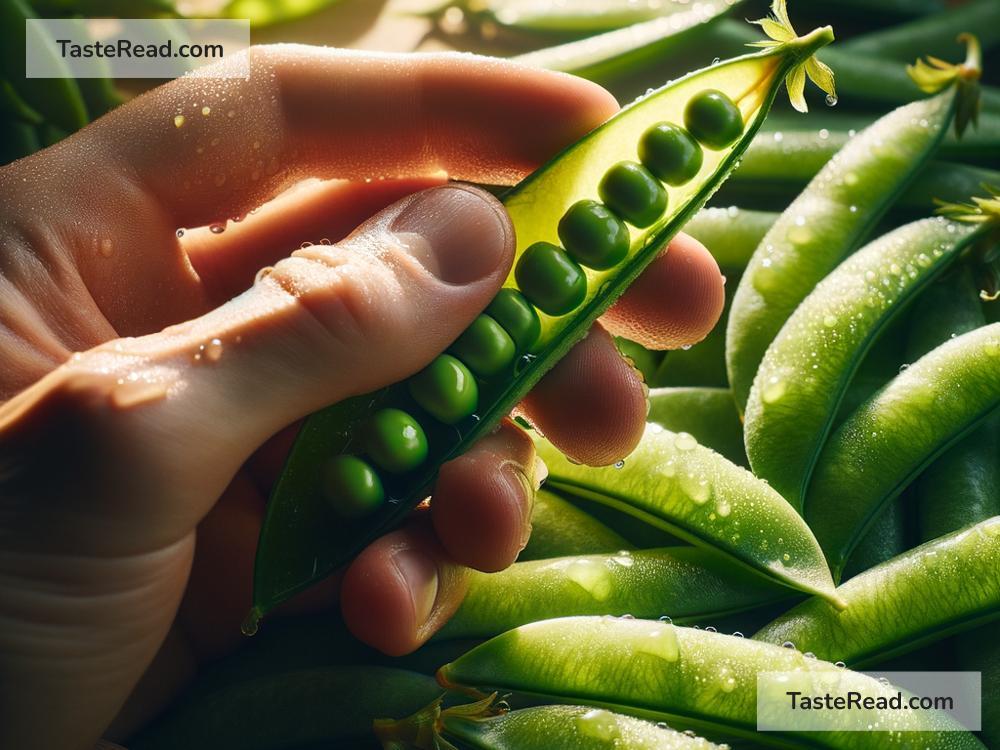The Science Behind the Crunchiness of Fresh Snap Peas
Snap peas are one of the tastiest treats of spring and summer. Their bright green pods, sweet flavor, and satisfying crunch make them a favorite snack and a versatile ingredient in the kitchen. But have you ever wondered what makes snap peas so delightfully crunchy? Let’s explore the science behind that crisp bite, using simple language for easy understanding.
What Is Crunchiness?
Crunchiness is that exciting sensation we feel when our teeth break into a food, followed by the sound and texture of its crisp structure collapsing in our mouth. Crunchy foods appeal to many people because they add variety to our eating experience. Whether it’s snap peas, potato chips, or celery, crunchy foods are loved for the satisfying combination of texture and sound.
But what’s happening on a scientific level when you bite into a snap pea? The answer lies in how snap peas are built.
The Unique Structure of Snap Peas
To understand what makes snap peas crunchy, we need to look at their structure. Snap peas (also called sugar snap peas) are a type of edible-podded pea, meaning you can eat the entire pod and not just the peas inside. This structure consists of several key parts that play a role in their crunchiness:
-
The Cell Walls: Snap peas are made of millions of tiny cells, and each cell has a sturdy wall surrounding it. These cell walls are made mainly of cellulose, which is a tough material that gives plants their structure. Think of cellulose as the building blocks that keep the plant’s cells firm and prevent them from collapsing.
-
Turgor Pressure: Inside each cell is water, which keeps the cell plump and rigid. The combination of water inside the cell pressing outward against the cell wall creates what’s called turgor pressure. This pressure makes fruits and vegetables, including snap peas, feel firm and fresh.
The crunchiness of snap peas is connected to the balance between strong cell walls and the pressure of water inside the cells. When a snap pea is fresh, its cells are well-hydrated, and the turgor pressure is high. This makes the pea crisp and crunchy when bitten.
What Happens When You Bite a Snap Pea?
When you take a bite of a snap pea, you’re breaking the plant’s cell walls and releasing the water stored inside the cells. This breaking is what creates the satisfying crunch sound. Scientists call this process fracture mechanics, which is just a fancy way to describe what happens when brittle materials (like the cell walls of snap peas) break apart.
The more rigid and hydrated the cells, the louder and crisper the snap. That’s why fresh produce like snap peas is crunchier than older produce—once the cells lose water and turgor pressure decreases, the snap pea becomes softer and loses that prized crunch.
Why Are Fresh Snap Peas Crunchier?
You may have noticed that snap peas taste crunchier right after being picked from the garden or bought from the store. This is because they still have high turgor pressure and intact cell walls. However, as snap peas sit for days in your fridge, their cells start losing water, and the pressure drops. Without this pressure to keep the cells firm, the peas stop being crispy and turn softer.
That’s why storing snap peas properly is important to preserve their crunchiness. Keep them cold and store them in a damp paper towel or a breathable bag in the fridge. This helps slow down water loss and keeps them fresher for longer.
How Cooking Impacts Crunchiness
Cooking snap peas can change their texture, too. Heat causes water to move out of the cells and weakens the cell walls, leading to softer snap peas. Though cooked peas are still delicious, they won’t have the same crunchy bite as raw snap peas.
If you want to keep their crunchiness in a cooked dish, cook them lightly. A quick sauté or a brief blanch in boiling water will keep the snap peas vibrant, sweet, and slightly crisp.
The Role of Freshness in Crunchy Snap Peas
Farmers and gardeners aim to grow snap peas that are as fresh and crunchy as possible. Snap peas grow quickly and should be picked when they’re full yet still tender. If left on the vine too long, they become overripe, and their pods toughen and lose the characteristic crunch.
The next time you eat a snap pea, savor its crispness and remember that science is behind every bite. Its crunchy goodness is a team effort between strong cell walls, high turgor pressure, and well-maintained freshness.
A Fun Fact About Crunchy Foods and Humans
Did you know that humans are particularly drawn to crunchy foods? Scientists believe the sound of crunching is associated with freshness and ripeness, which were important cues for survival in the wild. That’s one reason why the crunch of snap peas feels so satisfying—it signals freshness to your brain!
Conclusion
Snap peas are more than just a tasty snack; they’re an example of nature’s clever design. Their crunchiness comes from the strong and hydrated structure of their cells, which work together to create the perfect bite. By understanding the science behind snap peas, we can better appreciate their crisp texture and know how to store and prepare them for maximum enjoyment.
So, the next time you open a bag of snap peas, listen to the crunch, marvel at the science behind it, and enjoy the freshness nature has to offer!


